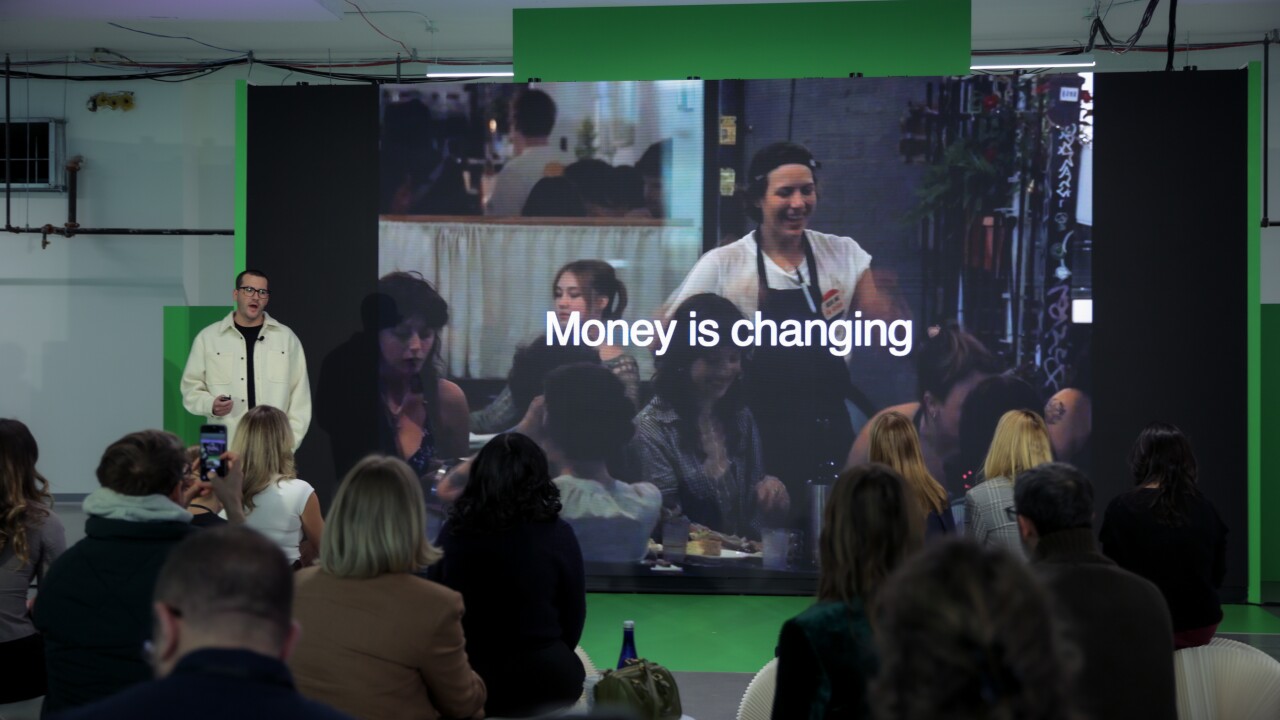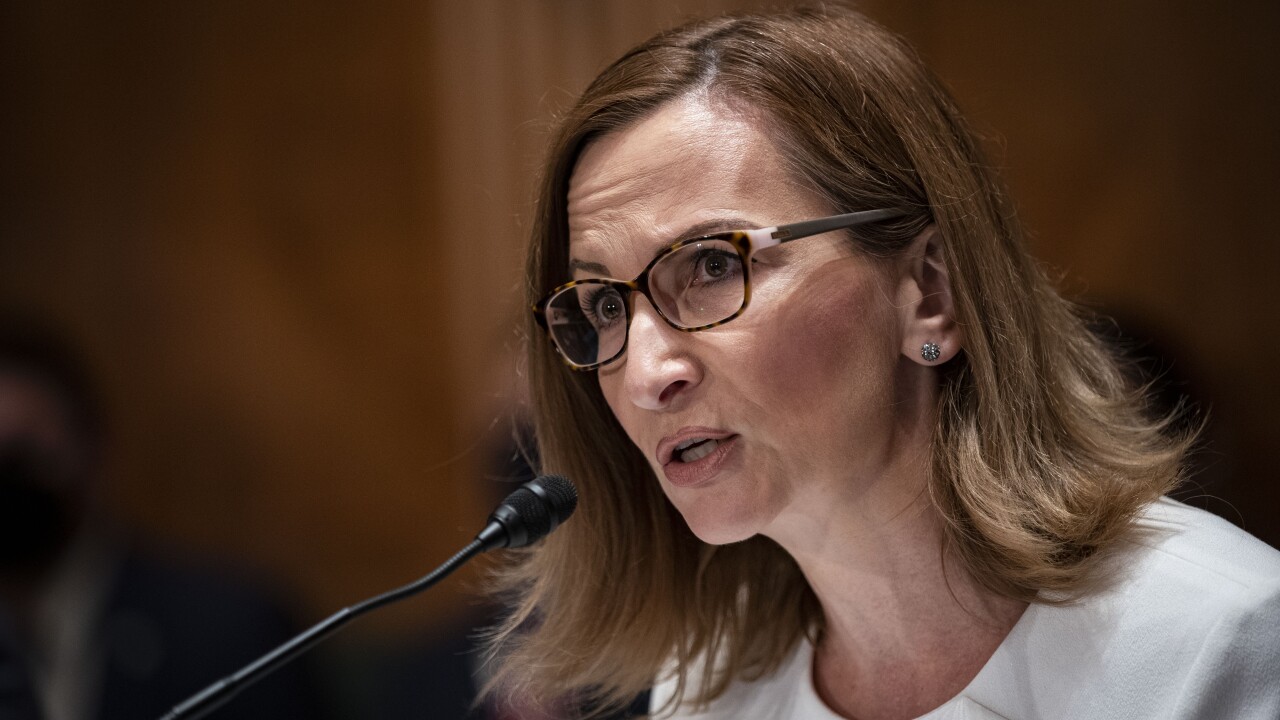International Business Machines Corp. is promoting a system that can project interactive advertisements within a bank branch.
The Everywhere Display system is similar to a projection television and can show ads on walls, floors, windows - even the ceiling. People can "click" on the images by touching part of them (if they can reach them), much as they might click on a link on a Web page to get additional information about the products or services being promoted.
Mark Greene, the general manager of IBM's global banking industry division, said that three national banking companies, which he said he could not name, are interested in using the system.
One of them may combine the Everywhere Display with radio frequency identification chips that would identify individual customers so it could project ads targeted to them, Mr. Greene said.
He also said that since the system is not being mass produced and its only real-world deployment is in a Metro Group Future Store in Germany, it is still "fairly expensive."
He spoke Aug. 16 at an IBM technology showcase at which the device was demonstrated. The showcase was in Hawthorne, N.Y. near the company's headquarters town, Armonk.
Claudio Pinhanez, the IBM research scientist who invented the Everywhere Display, said it can turn any surface into an interactive display. At night the projector can show ads on windows to passersby; during the day it can pivot to display ads within the branch for customers.
He said that portions of the ad displays are clickable. A camera determines when people touch parts of the image, and the machine responds by projecting a new screen.
For example, in a multiple-product ad, a hand put over the part about checking accounts will provide details about them.
The device "creates a pixel on a surface that's interactive," Mr. Pinhanez said. "It's a way to link the virtual to the real world."
He said the display could also provide entertainment for rowdy children by projecting a cartoon they can chase around the branch.
Bank of America Corp. of Charlotte and Commerce Bancorp Inc. of Cherry Hill, N.J., have experimented with electronic displays in branches, but spokeswomen said that they had not used the new IBM technology.
Diane Wagner, a spokeswoman for Bank of America, said it tried something similar in 2003, "an interactive sign that was beamed directly onto film hanging behind our banking center windows."
The display was tested for 90 days in a Chicago branch. The images were projected onto a touch-sensitive screen; they could also be projected onto windows but were not interactive then.
Allegra Sandelli, a vice president and the director of corporate advertising for Commerce, said it uses flat-screen televisions that "take the places of static and stagnant messaging such as posters and print materials."
It has 60-inch flat-screen plasma displays in 160 of its 350 branches, she said, and they are a staple of every new branch built in the past four years. "We can change our messaging as opportunities arise, and it's always fresh."
These displays cannot follow customers around the branch or offer ways for them to respond to the displays. "They just display what we tell them to display; they are not interactive," she said.
Ms. Sandelli said she was not familiar with IBM's system, and she questioned the value of interactive displays. She said she did not think customers would be comfortable with very big interactive displays "in a banking environment."
She noted that Commerce's own screens are so large that they are "really not a personal experience" for the customer. The images projected by the IBM system may also fail to create a direct connection to people in the branch, she said.
A more important consideration, Ms. Sandelli said, is that Commerce prefers that its customers interact with its branch staff, not with machines.
Alenka Grealish, who manages the banking group at the Boston market research firm Celent Communications LLC, said Thursday that interactive displays offer some advantages but cannot mask other problems in the branch.
Flashy screens will not make up for unpleasant tellers, Ms. Grealish said. "Banks have a lot of demands on both their human and their financial resources when it comes to branch banking," she said. "They need to make sure their fundamentals are in place before they embark on something this advanced."
But despite Ms. Sandelli's criticisms, Ms. Grealish said Commerce would be a good candidate for IBM's technology because "they are one of the banks that have gotten the customer-service piece pretty well" and it has experience with displays.
She also said that banks must consider whether their customers are ready for this type of advertising. "If you take a traditional branch where you've got the maze and then you've got a bunch of tellers behind glass, and then you introduce this technology - it's going to seem incongruous."
Ms. Grealish said the Everywhere Display might fit in better in less traditional branch designs, like the "investment access centers" that FleetBoston Financial Corp. ran. (Bank of America got them last year by buying Fleet.) These branches have prominent online banking stations that permit customers to log on with a card swipe and log off by walking away from a pressure-sensitive floor panel. They also have large flat-panel displays above the online banking stations.
Ms. Grealish said customers would be more receptive to flashy technology in these branches because "they think of the bank branch as more than the teller station."
Jerry Silva is the service director for the retail banking and delivery-channel practices at MasterCard International's TowerGroup Inc. research subsidiary in Needham, Mass. He said in an e-mail that in branches the IBM gizmo would probably be used "to show off the technology acumen of the bank - not necessarily to deploy on a large scale and make it a significant part of the branch's functionality."





